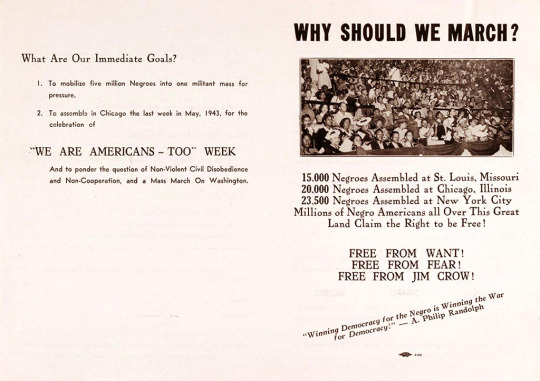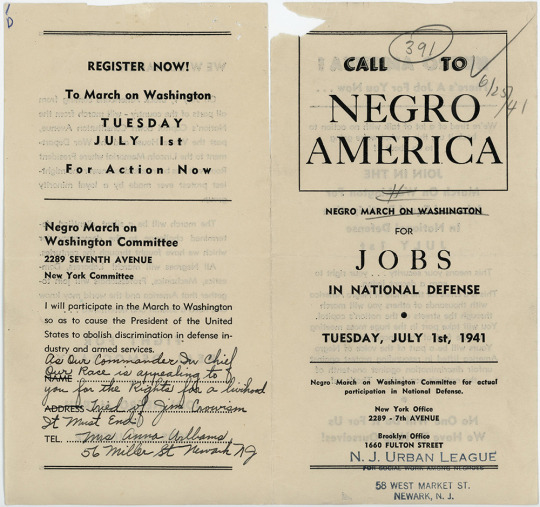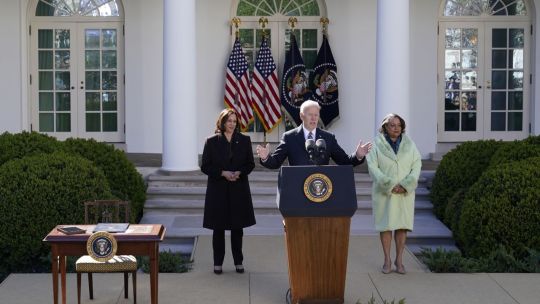Don't wanna be here? Send us removal request.
Text

youtube

The United States has one of the highest incarceration rates in the world. Historical contributing factors to this high rate of incarceration include the War on Drugs policies, institutionalized racism, private prisons, and tough on crime policies which incorporates politicians fear of being labeled soft and losing the approval of voters. The book "The New Jim Crow: Mass Incarceration in the Age of Colorblindness"" by Michelle Alexander successfully explains the disproportionate manner in which mass incarceration affects the Black community. She delves into the history of slavery, the Jim Crow Era, and their effects on today's society and how it paved the way for the high rates of incarceration we see today. Discussed in the book is the massive impact on communities of color and how the prison institution has created a new caste system where it has been normalized to treat felons as second class citizens and essentially legalized discrimination against them. She proposes alternatives such as prioritization of preventative programs and investment into social services such as education, mental health services, and rehab programs which may help to change the trajectory of those labeled felons or who fall victim to the prison system.
0 notes
Text


After being arrested for a violation of Alabama's law against mass demonstrations, published in the Birmingham News was a letter by eight white religious leaders that served as a critique on the method's Martin Luther King employed in his campaign for civil rights. In response he wrote a lengthy letter in which he expresses his point of view. He goes into his belief of civil disobedience and duty to break unjust laws, specifically laws that continued to call for segregation and the unjust treatment of Black Americans. This letter was then later revised and included in his book "Why We Can't Wait".
0 notes
Text
youtube


On August 3rd, 1980, Ronald Reagan, who at the time was a presidential candidate in midst of campaigning for the presidency, gave a speech in Philadelphia, Mississippi. In this speech he emphasized his support of state's rights which solidified his opposition to desegregation and civil rights. The location in which this speech took place held much significance in light of the murders of Andrew Goodman (a Queens College student) , James Chaney, and Michael Schwerner (both members of the Congress of Racial Equality) at the hands of the Ku Klux Klan. This occurred in the midst of their participation in Freedom Summer to help Black citizens register to vote and fight against intimidation and discrimination Black voters were facing. The murders took place towards the end of the Jim Crow Laws reign, a time in which Whites in the south felt threatened by the liberation and acquiring of rights by Black citizens.
1 note
·
View note
Text

At a time of overt racism in American society, the United States Army was no different. In the 1925 Army War Report, "The Use of Negro Manpower in War", it was deemed that Black men are "mentally inferior" , "by nature subservient", and essentially lacked the ability to be apart of the armed forces. This was used as evidence in support of rejecting the integration effort and also shaped the way Black soldiers were treated in the military. Efforts headed by Black leaders such as A. Philip Randolph , W.E.B. Du Bois, and Charles Hamilton Houston, prior to WWII, gave way for the Tuskegee Airmen program. In response to pressure from advocates of integration, the U.S. Army established the Tuskegee Airmen program in which African Americans received pilot training and examined to see if they were equipped to serve in the military in all capacities.
The success of the Tuskegee Airmen played a crucial role in the push for integration in the U.S. military forces. The program resulted in a success with President Harry Truman issuing Executive Order 9981 later down the line in 1948. This order abolished segregation within the armed forces of the United States.
0 notes
Text



The Negro March on Washington scheduled for July 1st, 1941 was organized by A. Philip Randolph, who was the President of the Brotherhood of Sleeping Car Porters. The march was organized due to previously ignored efforts. The goal of the march was to desegregate the armed forces and provide Black Americans with an equal opportunity to jobs in the defense industry which were preparing for the United State's entry into World War 2. Due to the potential threat of race riots prompted by the march, President Franklin Roosevelt conceded to the demands of the movement by issuing Executive Order 8802 which established the Fair Employment Practices Committee. This committee would be in charge of investigating discriminatory practice complaints and take action to redress them. In response to this, Randolph canceled the march and rather established the March on Washington Movement.
This march was the precursor to the 1963 March on Washington which did take place with more than a quarter million participants marching and gathering at the Lincoln Memorial. This march was modeled after the 1941 March proposed by Randolph. It's important to note that the march was extremely successful in the number of people they were able to mobilize to participate in the movement, especially in an era where methods of getting the word out included word of mouth, news channels, radio, and in-person advertising.
0 notes
Text




After the end of the Civil War in 1865, liberated African Americans were not able to freely exercise the rights recently granted to them by the 13th, 14th, and 15th Amendments. Instead, they were presented with a new hurdle called Black Codes. These codes allowed African Americans the ability to create contracts, buy and own property, marry and etc. But it also prohibited African Americans from owning certain types of property, put limitations on their traveling from state to state, and denied them from testifying in court against a White person. Simultaneously, they were forced to sign year long labor contracts which essentially emulated slavery times by restricting African Americans to solely do agricultural or domestic work. If they failed to submit to these codes, they were at risk of imprisonment, forced labor, receiving fines, and being subjected to violence.
The 1877 Jim Crow laws of the South were directly derived from these Black Codes. During the Jim Crow era, laws were enacted that mandated racial segregation. Jim Crow laws forbade African Americans from white spaces and implemented many discriminatory practices such as poll taxes, grandfather clauses, and literacy tests. The Louisiana Literacy Test is an example of how these laws targeted Black voters with the goal of barring them from suffrage. The test was made with the essential aspect that whether the test taker passed or failed was up to the discretion of the person administering the test. This along with the time constraint in which test takers were made to have completed the lengthy test, made it impossible for Black voters to cast their vote.
0 notes
Text

Saartjie (Sarah) Baartman was a South African woman who was taken to Europe to be enslaved and exploited. She was made a spectacle where crowds could pay to see her body on display. Even after her death, her body continued to be an exhibition which continued her mistreatment. Her story shows the inhumane actions committed against Black people throughout history and how traces of this conduct can be highlighted in today's society.
Sarah Baartman's story is a crucial piece in understanding the origins in the hypersexualization of Black women and the justification of violence and abuse towards them by White colonizers. As depicted in the drawing, we can see how she was sexualized, objectified, and made to be a spectacle to provide, the very people who encaged her, with pleasure and entertainment. It's notable to point out that her oppressors did not view her as human which prompted them to openly subject her to this treatment.
1 note
·
View note
Text
youtube


In 2022, President Joe Biden officially signed the Emmett Till Antilynching Act and made lynching a hate crime. This occurred 124 years after Ida B. Wells-Barnett had lobbied Congress in an effort to have them pass an antilynching law. During the 1800s and 1900s, lynching was being used as a way for everyday people to take "justice" into their own hands. White men in this period deemed themselves judge, jury, and executioner which resulted in the persecution and unjust murder of several Black Americans in the Jim Crow South.
In her pamphlet, titled "Southern Horrors: Lynch Law in All Its Phases", Wells-Barnett uses her platform to dissect the justifications made in support of these lynchings such as many victims being deemed rapists in order to justify their murder. White owned newspapers reporting on the instances consistently deemed the lynching victims as criminals while in the research conducted Wells-Barnett deems it to be mere lies. She comes to the conclusion that Black men were being falsely accused and lynchings were being done to continue the oppression of the formerly enslaved.
0 notes
Text


Critical race theory is essential to providing much needed context to the derivative points of realities Black Americans face in today's society. With the rising debate of whether it has a place in the American education system and the mere evidence of its exclusion from our classrooms, proves to support the white washed ideologies and view points that dominate the history books, we as a society, peruse through in search of the truth of the past. Understanding the way race plays a role in society and can negatively shape the way life is experienced by Black individuals, can help dismantle stereotypes and prejudices held by their counterparts. By understanding how societal structures function, through the lens of race, can help create a new perspective in which history is understood.
Being able to provide a full view of the varying experiences of Black folk in American, especially in such a crucial time of Black American history, could serve to hopefully continue the legacy of what Black Wall Street represented. At its peak it represented hope, resilience, and Black excellence. The 1921 Tulsa Massacre serves as an example of the structural violence continuously experienced by Black folks throughout history.
The Tulsa Massacre was an injustice that occurred against a thriving Black community much like what occurred to Seneca Village. The history of both communities is one that seems overtly hidden which is a recurring theme with instances of violence and discrimination against the Black community.
1 note
·
View note